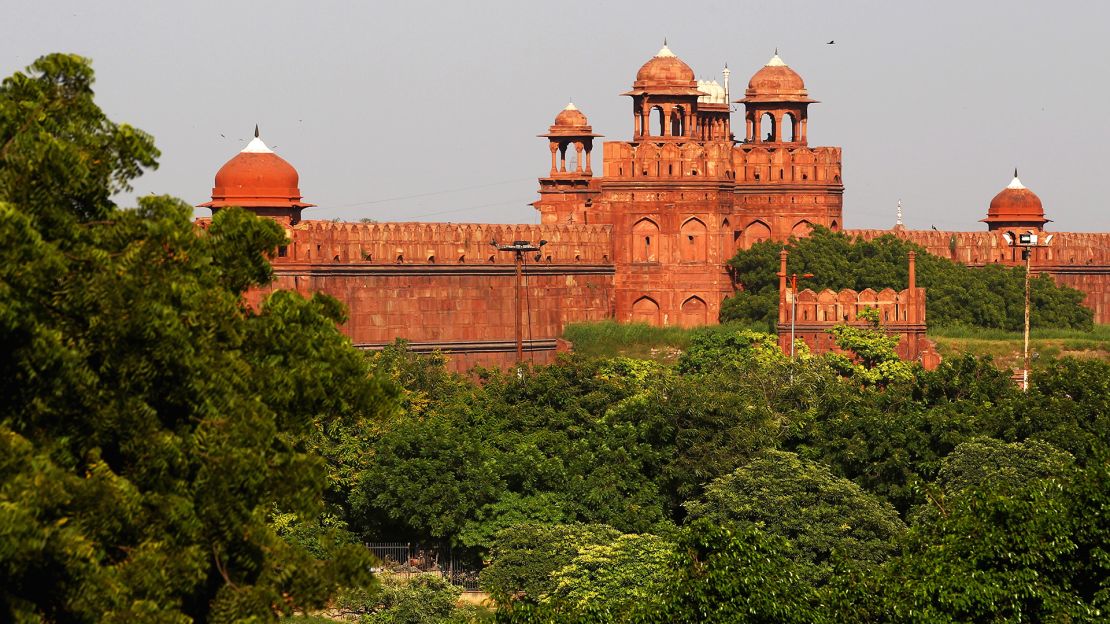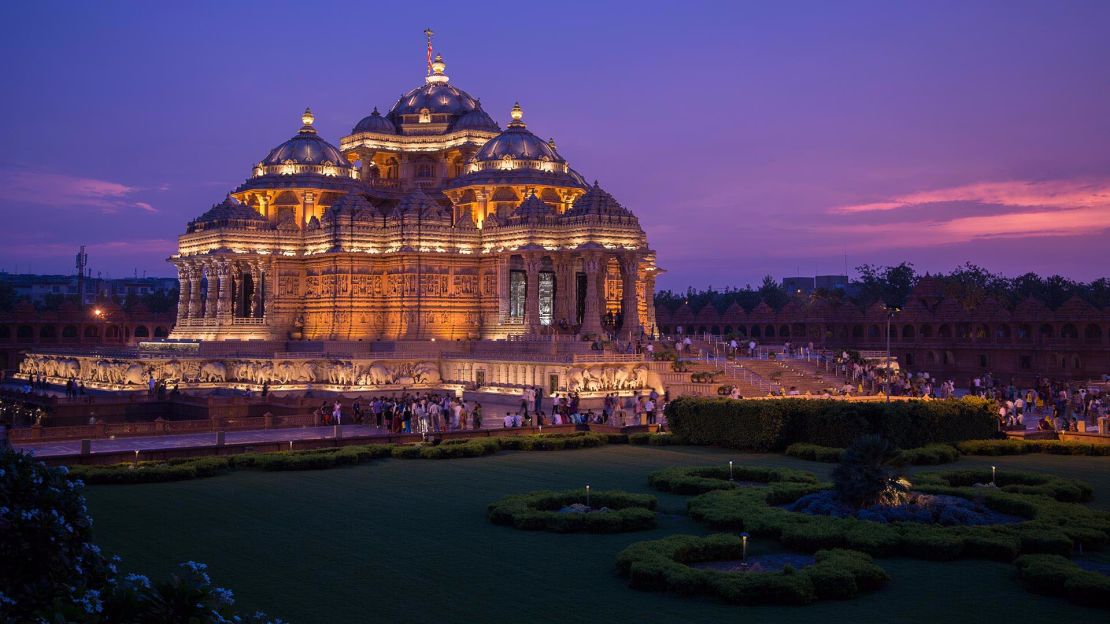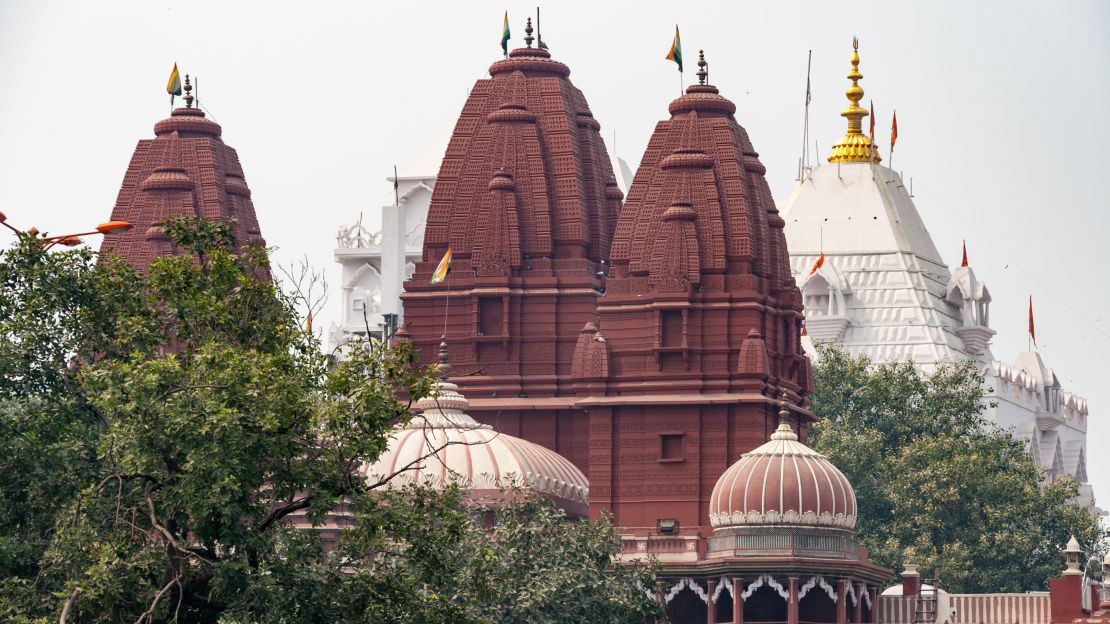Delhi seems like a colorful, cosmic swirl. India’s capital and second-largest city is in constant motion – whether it’s with people and cultures or religions and history.
And that makes it an ideal destination for the traveler who enjoys complexity and multicultural trips. Whether you’re enjoying the historic and sometimes chaotic vibe of Old Delhi or the emerging dynamic modernism of the government district in New Delhi, you’ll never be bored. (Though you may be surprised at the number of green spaces around the city where you can find some tranquility).
This list of a dozen attractions only skims the surface of the best the city has to offer, but it’s a good place to start when you travel here. While this lineup is heavy on historical and religious sites, we thrown in a few other ideas as well:
Red Fort

The Mughal Empire, which arose in 1526 and had a distant genealogical link to the Mongol Empire, was the dominant force on the Indian subcontinent for more than two centuries. The Red Fort, also known as Lal Qila, is often thought to represent the height of Mughal creativity and power.
It derives its name from its walls of red sandstone. At 33 meters (108 feet tall) and built starting in 1638 and finished 10 years later, the Red Fort’s walls leave a memorable impression on you.
The structure is a fascinating blend of influences: Islamic, Persian, Timurid and Hindu traditions are all there. See the Red Fort and witness grand sweep of Delhi history.
Red Fort, Netaji Subhash Marg, Lal Qila, Chandni Chowk, New Delhi, Delhi 110006, India; +91 11 2327 7705
Jama Masjid
Remember this name: Mughal Emperor Shah Jahan. You’ll see his name come up on a lot on a history-oriented trips of Delhi and India. He started construction on the Jama Masjid mosque in 1644 and finished in 1656. (He’s also the leader who built the Red Fort above and a mausoleum you just might know – the Taj Mahal).
The courtyard of Jama Masjid can hold up to 25,000 people, and this great mosque is the largest in India.
The mosque has three great gates, four towers and two minarets. Visitors can rent robes for a tour at the northern gate. Tourists aren’t allowed during prayer hours, but entry is free during non-prayer times.
Jama Masjid, Meena Bazaar, Jama Masjid, Chandni Chowk, New Delhi, Delhi 110006, India
Swaminarayan Akshardham

While you can visit any number of Hindu temples going deep into time and history, one of the more fascinating might be Swaminarayan Akshardham, a relative baby on the scene having opened in November 2005.
Visitors will find an intricately made sandstone and marble mandir (or house of worship) with elephant carvings at the base. At this “spiritual and cultural campus dedicated to devotion, learning and harmony,” you’ll also find open gardens and water features.
This mandir was built in tribute to Bhagwan Swaminarayan (1781-1830), a leading religious leader of his time who focused on service to the poor, nonviolence and emancipation for women.
Swaminarayan Akshardham, Noida Mor, Pandav Nagar, New Delhi, Delhi 110092, India; +91 11 4344 2344
Bahá’í House of Worship (Lotus Temple)
Another “newcomer” to the scene in relative historical terms is the Bahá’í House of Worship (Lotus Temple), which opened in December 1986. One look at the building will let you know the natural inspiration for the building’s fascinating design – the lotus flower holds a special place in Indian culture across all its many religions.
The temple says about 8,000 to 10,000 people visit it each day. It’s set in lovely grounds of palms and other greenery. Its wide-open, spacious interior is a wonder to behold.
Prayer services are at 10 a.m., noon, 3 p.m. and 5 p.m., and you can hear prayers from different religions, which are chanted or read out loud.
Bahá’í House of Worship, Lotus Temple Road, Bahapur, Shambhu Dayal Bagh, Kalkaji, New Delhi, Delhi 110019, India; +91 11 2644 4029
Qutb Minar
The Qutb Minar is renowned as one of the finest monuments not only in Delhi, but in all of India. And perhaps the world.
It soars to 73 meters high (that’s 240 feet). What makes it all the more amazing is its age – its construction start dates back to 1193. It was built as a victory tower by Qutab-ud-din Aibak to mark his defeat of Delhi’s last Hindu kingdom.
Carefully examine its five distinct stories. The materials and architectural styles change the higher you go as work continued on and off for centuries to come.
Qutb Minar, Mehrauli, New Delhi, Delhi 110030, India
Humayun’s Tomb
This is one of the first monuments of the Mughal Empire and considered one of the most outstanding examples of Mughal architectural style, which was heavily influenced by Persia.
It was built in 1565 at the instructions of the senior widow of Humayan. He was the son of the conqueror Babur and second leader of the empire that stretched into parts of modern-day Afghanistan, Pakistan and Bangladesh as well as northern India.
Noteworthy features include garden squares and water channels. Historical notes: Other Mughal rulers are also buried here, and it’s a UNESCO World Heritage Site.
Humayun’s Tomb, Mathura Road, Opposite Dargah Nizamuddin, New Delhi, Delhi 110013, India; +91 11 2464 7005
National Rail Museum
Railroads have played an indisputable role in the making of modern India, and you can learn all about it at the National Rail Museum.
Displays of signaling equipment, antique furniture and elegant old coaches are sure to please.
And don’t miss the Fairy Queen. It was built in 1855 and is a prime example of a steam locomotive engine of that era. If you’re traveling with children, be sure they get a ride on the miniature train on the grounds. There are plenty of indoor exhibits if you arrive during one of Delhi’s infamous hot days.
National Rail Museum, Chanakyapuri, Near Bhutan Embassy, New Delhi, Delhi 110021, India; +91 11 2688 1826
Nizamuddin Dargah
Another must-see in Delhi’s melting pot of religious sites is the Nizamuddin Dargah.
It’s the mausoleum of one of the preeminent Sufi saints, Hazrat Khwaja Syed Nizamuddin Auliya, who lived from 1238 to 1325. (Sufism is a mystic dimension of Islam that emphasizes spiritual growth and emotion over legalism and strict theology).
You’ll find the dargah in a lively Muslim market area of Nizamuddin West, which has become a prime location for living and visiting in south-central Delhi. It’s 1.2 kilometers (less than a mile) from Humayun’s Tomb if you’d like to take in both on the same sightseeing venture.
Nizamuddin Dargah, Boali Gate Road, Opp The Lodhi, New Delhi, Delhi 110013, India; +91 98117 78607
Sri Digambar Jain Lal Mandir (Bird Hospital)

Across from the much-visited and more famous Red Fort, you’ll find this intriguing and perhaps surprising place.
The Sri Digambar Jain Lal Mandir is a temple of the Jains, whose ancient Indian religion emphasizes nonviolence to all living things.
In that spirit, this temple with its detailed carvings and decorative paintwork is home to a charity hospital for birds. Partridges, pigeons, parrots, sparrows and domestic fowl and treated here. It also treats injured squirrels, which will not hurt the birds.
Visitors must remove their shoes and any leather items before entering.
Sri Digambar Jain Lal Mandir, Netaji Subhash Marg, Opposite Red Fort, Chandni Chowk, New Delhi, Delhi 110006, India; +91 11 2328 0942
Hauz Khas Village
Hauz Khas Village has become one of the capital’s top spots to shop, eat and generally enjoy the Delhi vibe.
With beautiful Deer Park providing an anchor, creative people from across Delhi and the rest of India are drawn to this increasingly prosperous area to set up up boutiques, restaurants, art shops and more.
Check out the Delhi Art Gallery (DAG), which focuses on 20th century works. (11, Hauz Khas Village, Deer Park, New Delhi, India;+ 91 11 4600 5300)
And for history buffs, there’s still plenty to see.
Old Famous Jalebi Wala
Indian cuisine is now loved the world over, and sampling the local food is one of the highlights of a trip to Delhi.
In an article on Old Delhi street food, CNN Travel recommends Old Famous Jalebi Wala, which opened in 1884. It’s known for two dishes: jalebi and samosas, which are popular globally.
Jalebis are one of India’s most popular sweets, which is made by deep-frying flour-based batter and then soaking it in sugar syrup.
Old Famous Jalebi Wala, Shop 1795, Dariba Kalan Road, Dariba Corner, Opposite to Central Baptist Church, Chandni Chowk, Delhi, India; +91 11 2325 6973
Fun N Food Village
A trip to Delhi can be like a trip to Rome – overwhelming. With so many historical, cultural and religious sites to see, you may need a vacation from your vacation.
That’s where Fun N Food Village comes in.
This water park touts itself at India’s largest collection of water slides. It’s a nice way to cool off during Delhi’s notorious hot months, and it’s also a great way to mingle with locals and people-watch in a way that’s hard to do at tourist sites and museums.
Fun N Food Village, Old Delhi Gurgaon Road, Kapashera, New Delhi, Delhi 110097, India; +91 99 9000 6518
















